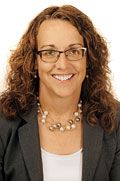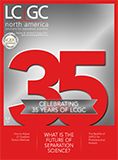Where Separation Science Is Heading
LCGC North America
For this 35th anniversary issue of LCGC North America, we asked leading separation scientists what they foresee for the future. Their essays are insightful and thought provoking.
For this 35th anniversary issue of LCGC North America, we asked leading separation scientists what they foresee for the future. Their essays are insightful and thought provoking.
The contributors address the challenges of measuring ultratrace-level compounds or ubiquitous analytes like water. They assess our ability to characterize biopharmaceuticals and to separate proteoforms. They celebrate the maturing of young techniques (like multidimensional LC) and innovations in mature techniques (like GC). They propose new approaches in sample preparation, hyphenation, ion mobility, and ionization. They consider how separations could revolutionize diagnostics or lead to breakthroughs in the study of epigenetics. They size up small instruments and measurement at small scales (such as in individual cells). They assess progress toward long-standing goals like predicting retention, and completely new technologies like 3D printing. Lastly, they consider the status of separations in the broader scientific community.
The variety in these perspectives reflects the diversity of the authors’ interests, and perhaps their range in age from an emeritus professor to one who just started his own research group. (Geographically, we focused on North American scientists, because the coming 30th anniversary issue of LCGC Europe will emphasize European perspectives.) More importantly, this variety reflects the dynamism of the field; these essays demonstrate that separation science, though mature, offers plenty of room for growth.
LCGC’s editorial team is proud to celebrate this anniversary. We are also grateful to the community of columnists, editorial advisory board members, contributing authors, and readers involved in bringing us to where we are today.
We are also excited to launch the redesign of our print magazine. Our new look is fresh and clean, and reflects our belief that substance reigns supreme, as we continue to present information without fuss or showy photos.
The path ahead for separation science is full of excitement, and we are thrilled to continue the journey.

Laura Bush
Editorial Director
New Method Explored for the Detection of CECs in Crops Irrigated with Contaminated Water
April 30th 2025This new study presents a validated QuEChERS–LC-MS/MS method for detecting eight persistent, mobile, and toxic substances in escarole, tomatoes, and tomato leaves irrigated with contaminated water.

.png&w=3840&q=75)

.png&w=3840&q=75)



.png&w=3840&q=75)



.png&w=3840&q=75)










